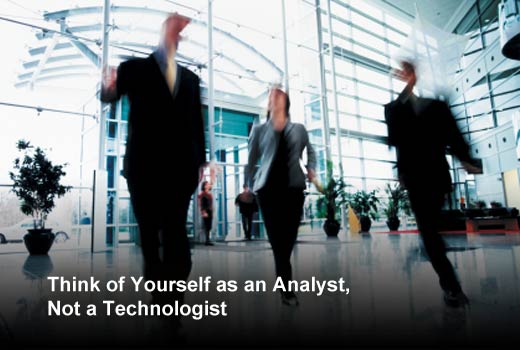The role of the CIO and IT teams has changed dramatically. Traditionally, IT teams concentrated just on programming, infrastructure management and building applications from the ground up. Today, successful IT teams are the ones with a deep knowledge of how to take that expertise to drive the business forward. Every IT organization has the ability to make this transformation.
In this slideshow, SanDisk CIO and SVP Ravi Naik outlines critical issues CIOs need to address in six quick tips to get IT teams to the next level.
6 Tips for CIOs
Click through for six tips CIOs can use to get their IT teams to the next level, as identified by SanDisk CIO and SVP Ravi Naik.
Always Ask ‘Do We Need It?’
Even if your IT group is highly disciplined and organized, other parts of the business will regularly assume they’re going to get caught up in the desire to play with cool toys and fun projects. Every new technology has to be measured in terms of how it impacts business productivity and process improvements. One of the big reasons cloud technologies have gained such widespread acceptance is because cloud advocates like ZenDesk and ServiceNow have simplified their value proposition for a broader range of employees and executives. These companies talk about results, not technology. The absence of such rigor can result in the ‘disruptive’ new technology being disruptive to the business.
Think of Yourself as an Analyst, Not a Technologist
Simply put, most IT organizations (and CIOs) shouldn’t be creating or even managing technologies. They should be evaluating them. Creating your own applications — or even maintaining your own data centers — can take up inordinate amounts of time and energy. Leveraging cloud services and third-party solutions allows IT groups to leverage their time and budgets better. To succeed, CIOs need to shift their mental frame of reference: their job is more to be an in-house analyst than the go-to-guy when things go wrong.
Know the Details
When CIOs are willing to get their hands dirty and do grunt work, they gain the respect of their teams and their business. It also ensures the architecture and solution designs stay simple, easy to build and support. Additionally, the roadblocks and excuses on the path of faster execution start disappearing when the head of the organization starts leading by example.
Foster Teamwork and Collaboration
People follow their leaders. A strong and cohesive leadership team results in a strong and cohesive organization. Individual contributors in most IT organizations are highly capable and work very effectively as teams. Nonetheless, conflict can and does arise. Non-collaborative employees who deliver quick results are many times appreciated and promoted, but this almost always results in long-term organizational dysfunction. CIOs should very quickly address these situations and make timely changes. It is very important for CIOs to meet with individual employees on a regular basis to understand the challenges and get a pulse of the organization.
Fix Intractable Problems
Two years, ago, the SanDisk IT group was asked to help the legal department accelerate the e-discovery platform employed by the company. E-discovery is a necessity: SanDisk generates approximately half a million emails a day and it takes approximately 30 seconds (at a cost of $250 or more per hour) to scan emails by hand. One of the first things they discovered was that the underlying storage platform was, ironically, based on hard drives. Indexing 25 years worth of emails with the drive system took just under six months and the data would frequently need to be re-indexed. By migrating to an all-flash system, SanDisk reduced the time required from under six months to four weeks. This is something that other IT departments should seriously consider.
Look at the Big Picture
Gartner’s emphasis on total cost of ownership (TCO) has changed the way companies evaluate technology investments. Still, it’s not easy to determine all the factors that can be included in TCO analyses. In 2013, SanDisk conducted its own TCO experiment by swapping hard drives inside of 4,600 of its corporate laptops with SSDs. The program yielded many of the expected results. Employee productivity rose substantially through quicker boot-up, shut down and application loading and the battery life on each laptop was extended by 20 percent. But that employee productivity wasn’t the only benefit. The laptop lifecycle improved by 33 percent, which translated into approximately $1.84 million gained in deferred expenses. The global IT desk experienced a 59 percent decline in hardware-related service tickets. Annual IT labor costs linked to improperly working disks and to recovering lost data fell by 86 percent.
When IT takes a step back from the daily grind and the nuts and bolts of support, there is an opportunity to move the IT organization higher up in the value chain by partnering closely with the business. This happens as a result of CIOs engaging with their employees and providing a collaborative and cohesive work environment.









